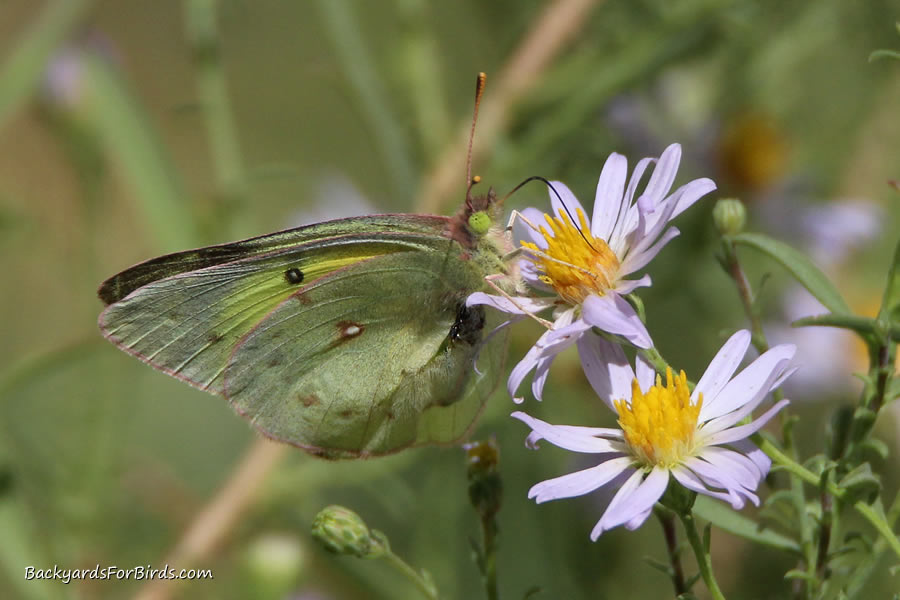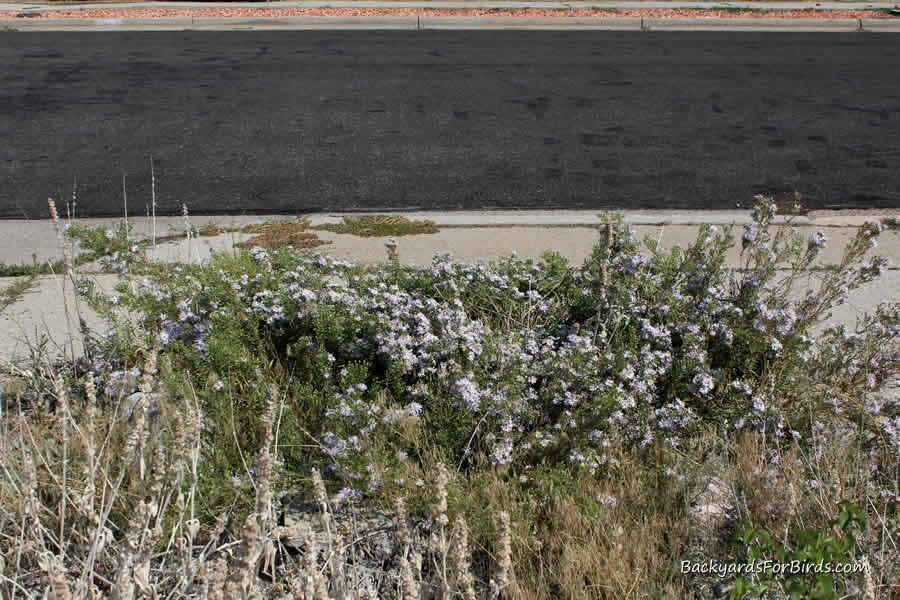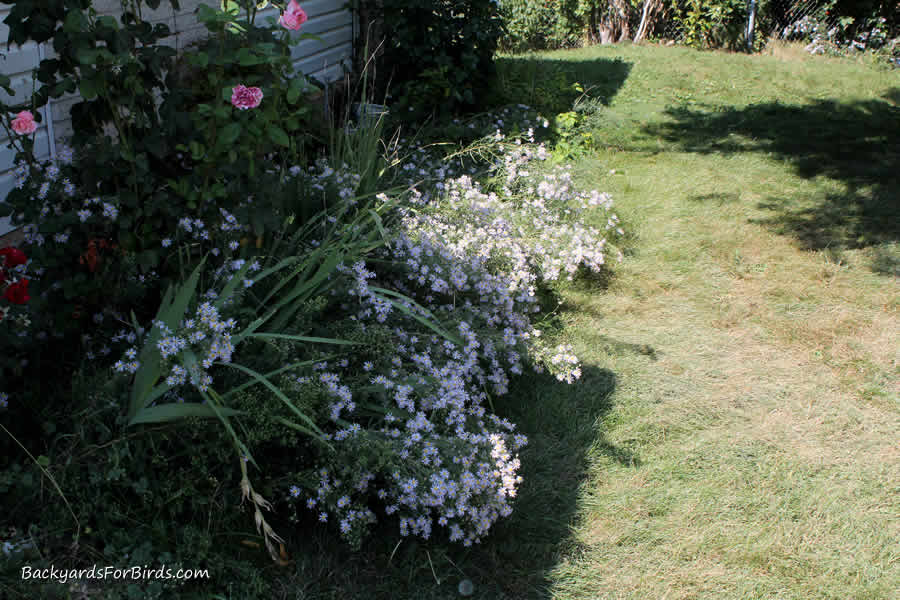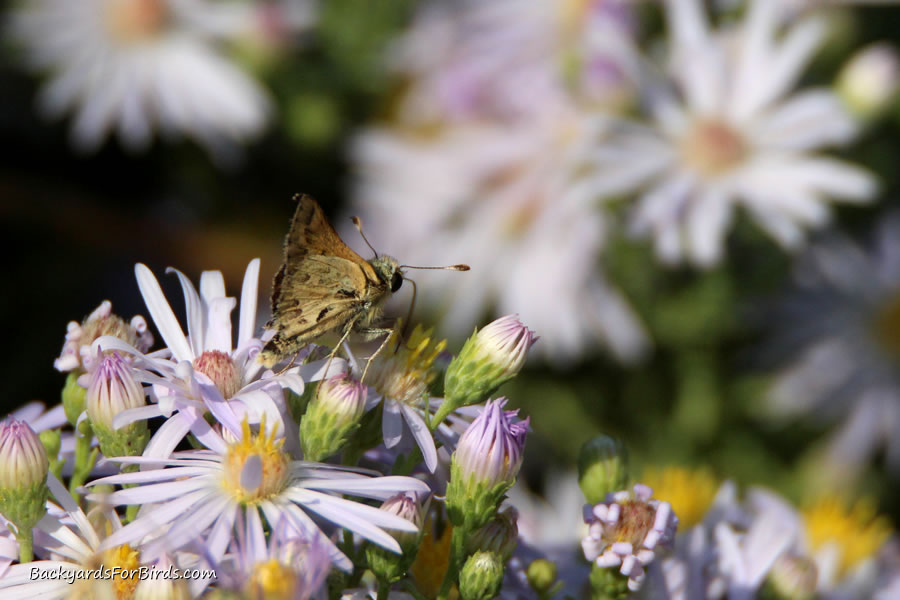If you are trying to enhance the yard for pollinators, particularly bees and butterflies, providing nectar-bearing flowers is essential throughout the growing season.
Aster is a great late-season nectar-producing flower that is good for both butterflies and bees by providing nectar during late summer and early fall when most other plants have spent their blooms for the year.
Bees are highly attracted to aster when they are in bloom.
It’s the second week of September, and our aster flowers are just now starting to go into full bloom and numerous bees are actively feeding on the colorful flowers.
Butterflies are also attracted to aster and will feed on its nectar.
In fact, just now I went out to photograph my patch of wild-sown aster and this sulphur butterfly was fluttering around the blooms, actively going from flower to flower feeding on the nectar.

Aster is a perennial and it comes back every year. And from our experience, aster is very drought tolerant and can do well on limited water when necessary.

We have a small section of the yard that receives no water, other than the limited rainfall we get out here in the West.
Despite the lack of water, our aster grows every year and blooms quite well with no watering from our part.
It does do better with a little water, however, but aster can grow and even thrive in drought-stricken areas.

I actually never planted the aster in my own yard, it just showed up one year in my backyard.
Early on and not knowing what it was, I would mow the large aster stand every time I mowed the lawn, but it would just keep growing and eventually bloom even if it was only a few inches tall from the routine mowings.
In fact, mowing doesn’t kill aster, it will keep growing and even bloom if given a chance.
If left to grow, aster will grow to nearly 3 feet in height, producing an array of colorful blooms during fall.
It wasn’t until a couple of years ago I let it grow and realized what it was, a very beneficial native wildflower that blooms in late summer.

Aster prefers and grows best in garden locations offering full sun, but a little shade is tolerated.
We have a plot of aster that gets sun from sunrise to about 2:00 p.m. and it grows and blooms quite well despite the late-day shade it receives.
After the bloom has been spent, aster will produce seeds and will reseed itself.
Aster is a little bit invasive if left alone, it can and will spread by both seed and by rhizome (underground horizontal roots), but it’s not as aggressive as many other plants out there are.
With a little effort, especially by deadheading the spent blooms and pulling up any unwanted sprouts if spreading is not desired, aster can be controlled.
Like most plants, left to their own device, aster can and will spread but that is how nature works, plants are continually propagating by nature so it’s up to us to keep them in check if they begin to grow where they are not wanted.

They are only doing what nature is telling them to do, reproduce and grow.
We shouldn’t fault them for what they and all living things in nature are programmed to do, breed and reproduce.
Planting aster, like many wildflower seeds, works best if sown in late fall or early winter so the seeds can go through the natural winter stratification process.
If you have a lot of sparrows, as we do, the best time to plant aster is just before the first snowfall so the tiny seeds can be covered and protected from hungry birds.
We love aster in our yards. It not only gives the yard a splash of color during late summer and early fall, but the small and colorful blooms attract a variety of bees and butterflies to feed on its nectar.
It’s a win-win for both the yard and nature.
If you are like us and love having birds, bees, butterflies, and all other creatures in nature in our own backyards, we suggest subscribing to our blog to get email notifications for future blog posts.
Birding Apparel
Visit Bird Shirts and More for a great gift for the nature lover or birder on your shopping list. Use coupon code SAVE20 for 20% off your purchase.


